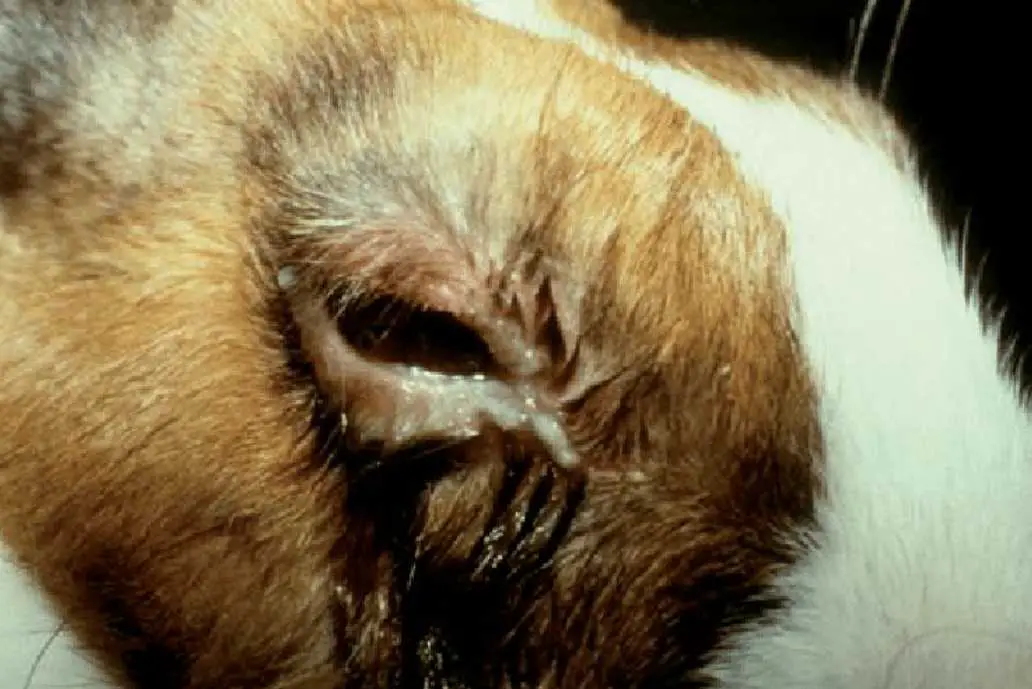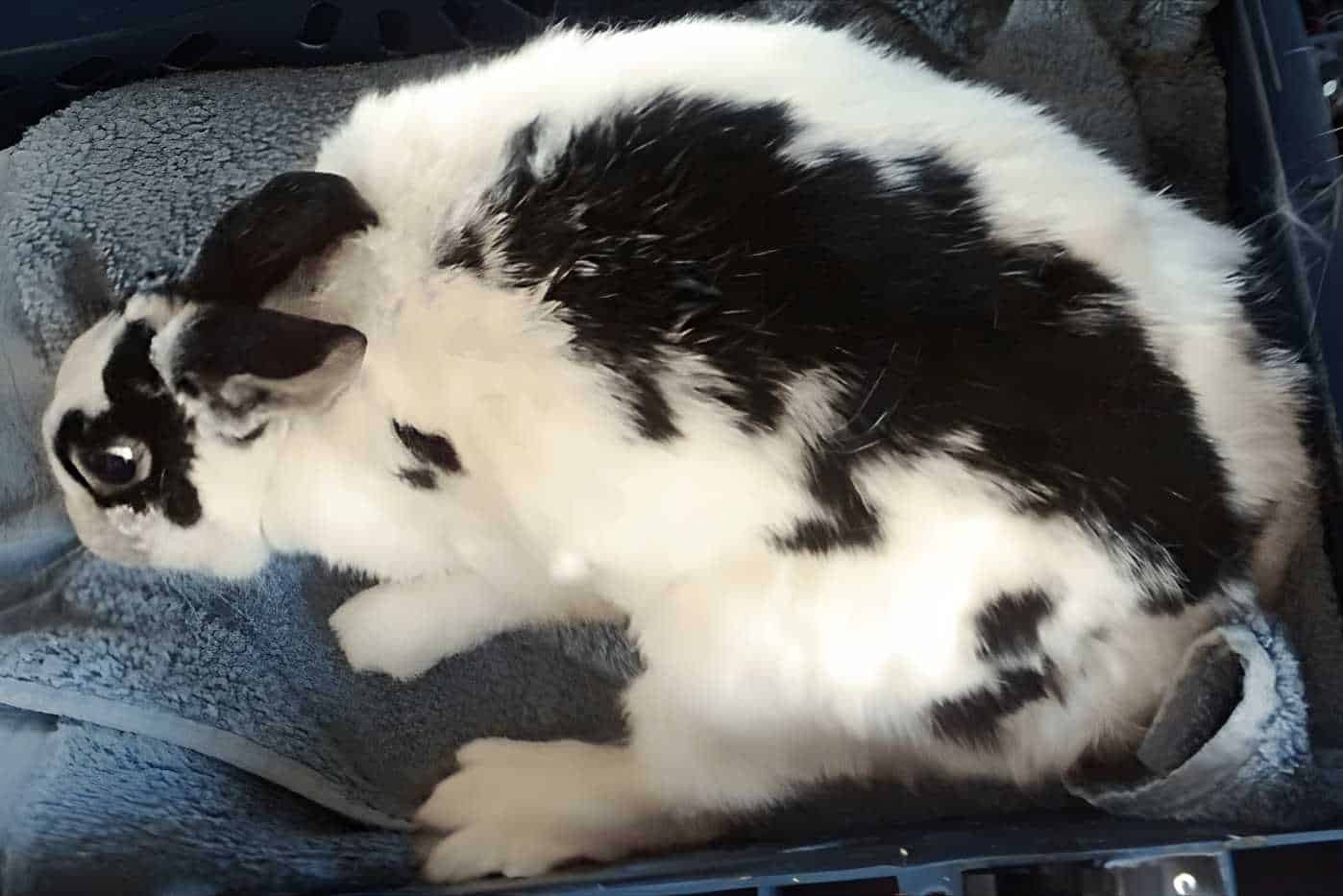It’s never pleasant to see your pet bunny suddenly get sick. Whether it is a mild cold or something more serious, it can be difficult to watch your pet struggle. If you have a sick rabbit at home, continue reading this article to find out how you can help.
How Should You Treat Sick Rabbit At Home
The best thing to do if you notice your rabbit getting sick is to take your pet to the vet. A professional can properly diagnose your bunny and prescribe all the necessary medications for the diagnosis. In case you are not able to take your bunny to the vet right away, here are at-home treatments for some common rabbit diseases.
How To Treat Rabbit At Home For Ear Mites
Ear mites are nasty parasites that live in a rabbit’s ears – they lay eggs, multiply, eat, and excrete waste in there. They can cause infections in your bunny’s ears, apart from the pain and discomfort your pet can feel while the mites are nested in there.
If you bring your pet to the vet, they will probably prescribe ivermectin or similar medication. However, you can treat your rabbit at home as well.
If you want to treat the infection caused by ear mites naturally, you can use almond or coconut oil. Pour around ten drops on the cotton swab and gently massage your bunny’s ear with it. The calming properties of the oil will help the irritation and pain. Do this once a day for five days and then every other day for another ten days.
Another option is to buy a product designed to kill the ear mites and soothe the infection. Make sure that the product you buy is intended for rabbits and use it according to the instructions on the bottle.
How To Treat Rabbit At Home For Fur Mites
Fur mites are parasites that live in a rabbit’s fur. They can cause discomfort and itching, so you may notice scabs on your bunny’s body. If you are positive that your pet has mites, you need to change your pet’s bedding and separate it from the rest of the kittens, if any.
Treatment for fur mites is either ivermectin or selamectin. The first one is given by injections while the latter is a topical treatment. You will probably need to visit your vet for the prescription or you can ask for the medicine in a vet pharmacy. If you are not a professional, opt for the topical treatment because it is far less invasive and easier to administer.
Your rabbit may have scabs and itchiness even when you manage to kill off all the mites. You should brew a calming tea, like chamomile or mint, and massage your rabbit’s skin with it. Use a clean towel to do so – your rabbit shouldn’t get wet. There are also solutions that you can buy to soothe your pet’s irritated skin; you should use them according to the manufacturer’s instructions.
How To Treat Rabbit At Home For GI Stasis
GI Stasis is an illness that can happen to rabbits of any age. It occurs when the natural microbiota in a rabbit’s stomach changes, usually due to a bunny eating something it can’t properly digest.
When this happens, the food doesn’t move through the gastrointestinal tract as it should, causing rabbit pain, diarrhea, and gases. Soreness can prevent your rabbit from eating and drinking water which can, in turn, cause dehydration.
GI Stasis can become a serious problem if not treated properly. The best thing to do for your bunny is to take it to the vet, but if you are not in a position to do so immediately, try treating them at home by yourself.
If you suspect that your rabbit has GI Stasis, the most important thing to focus on is hydration. If your pet doesn’t want to drink water from a bottle, try a bowl of water instead; your bunny may find it easier as it is more natural for rabbits to drink water that way. If that does not work, you should try and hydrate your bunny using a syringe.
It’s crucial for your pet to eat too. Increase the percentage of fibers in your pet’s diet during these days – high-quality hay and fresh vegetables and fruits are a good way to do so.
Since your bunny probably experiences pain when sick, you should try to massage your pet’s tummy. Do this very gently and if you notice any sign of discomfort, stop immediately. If your rabbit enjoys the massage, do it a few times a day for several minutes.
If your rabbit’s pain and diarrhea persist for more than two days, you need to take your pet to the vet. It means that the illness isn’t going away on its own and that some medical treatment is necessary.
How To Treat Rabbit At Home For Eye Infections
You can easily notice when your rabbit has an eye infection. Your pet’s eyes can get red and itchy with swollen eyelids and unusual discharge. Eye infections can be caused by bacteria, viruses, or a foreign object in the eyes. If you can’t take your pet to a vet right away, there are some things that you can do to help your rabbit.
If you see that your pet has a foreign object in the eye, you should try to remove it using sterile tweezers. You should keep your bunny calm and relaxed because it can be a stressful experience. In case you are not sure how to remove the object safely, wait until you can take your rabbit to a vet.
Whatever the cause of your rabbit’s eye infection, you can use eye drops explicitly intended for rabbits. You can get them online or in a vet pharmacy and you should use them according to the instructions on the bottle.
Keep in mind that if your rabbit’s eyes don’t get better in a day or two, you need to take your pet to a vet. If it’s a bacterial or viral infection or if there is a foreign object that you can’t see or reach, the vet needs to prescribe the necessary medication and remove the object safely.
How To Treat Rabbit At Home For Respiratory Problems
Rabbits can get respiratory problems from time to time, and while it’s usually just snuffles or cold, sometimes it can be more dangerous than that. Follow the next advice on how to take care of your rabbit at home, but if you notice that the symptoms are not improving, take your rabbit to a vet.
Respiratory problems manifest as coughing, sneezing, wheezing, and trouble breathing. Your rabbit’s throat may hurt and your pet’s overall mood can change. Your bunny may feel fatigued and have trouble sleeping, eating, and drinking water as a result of pain.
If this happens, you need to help your rabbit drink plenty of water and eat healthy food. This will keep your pet hydrated and the nutritious food can help boost the immune system so the body can fight off the cold better.
Your rabbit will need a lot of rest and a comfortable place to keep warm and sleep. Give your bunny a gentle massage a few times a day if you see that your pet likes it.
There is not much more you can do for your rabbit at home. If your pet has caught a mild cold the symptoms should stabilize after a day or two. If the symptoms persist, your rabbit probably needs some stronger medications and interventions at a veterinary clinic.
The vet may prescribe antibiotics if it is a bacterial infection, or some other medicine depending on the cause of the respiratory problem.
How To Treat Rabbit At Home For Fever
If your rabbit’s body is endangered by an infection of some type, the immune system will raise your bunny’s body temperature to fight off the bacteria or virus. A normal rabbit’s body temperature is 102° to 103° F; anything above this is considered a fever.
You should try to lower your rabbit’s body temperature using some cold water, a frozen bag, or ice cubes. You can dip your fingers in cold water and gently massage your rabbit’s ears and body without getting your pet wet.
You can also wrap a frozen bag in a clean towel and stroke your rabbit with it; the same technique applies to the ice cubes. It is crucial to not get your bunny wet but to just transfer the cold to its body.
As soon as possible, take your pet to a vet so they can diagnose and treat the cause of the fever.
Summary
It’s not pleasant to see your pet bunny sick, especially if you cannot take your rabbit to a vet for whatever reason. Luckily, there are some simple things that you can do to ease your rabbit’s discomfort and pain until you can visit a professional. If it is nothing serious, your rabbit may even get completely healthy in the comfort of its home.





